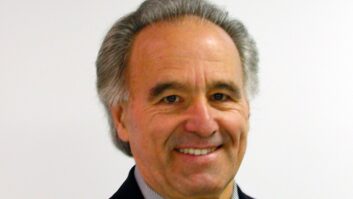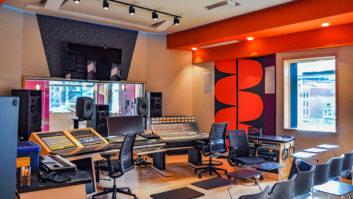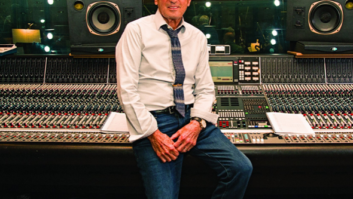
Norah Jones
Photo: Autumn De Wilde
A virtual unknown before 2002, Norah Jones became one of the most successful artists of the new century when her debut release, Come Away With Me, sold 18 million copies and swept the 2003 Grammy Awards, winning in eight categories. Jones’ inviting, gentle and sweet-sounding style drew from jazz, country and pop, all rolled into a distinctive sound that was unmistakably her own. She followed her initial triumph with two more popular discs: Feels Like Home (2004) was produced by the legendary Arif Mardin, while the 2006 album, Not Too Late, was a more homespun and personal project, made with her bassist boyfriend, Lee Alexander, in the confines of their Manhattan home studio.
Jones started her latest record, The Fall, more than a year ago, initially working with many familiar faces, but over time she realized, “I wanted to try something different and maybe use other musicians,” she says. “I had been working with the same people, who I love, for the last six or seven years. I decided I wanted to find a producer who could help me get out of my comfort zone.
“So I started looking for producers and it became really hard,” Jones says with a laugh. “A lot of people that I liked were busy or weren’t into doing it because the songs were already written and they would rather write together.” Besides writing several songs alone, Jones had co-written with Ryan Adams, Jessie Harris, Will Sheff and Mike Martin. She continues, “Then I thought, ‘Maybe I’ll just hire an engineer who has a strong personality, who can be an engineer/producer.’”
During the process of investigating producer/engineers who had worked on albums she liked, she came across Jacquire King, who had worked on Tom Waits’ Mule Variations, as well as CDs by Modest Mouse and the Kings of Leon, among others. The two met and, Jones says, “He just seemed really great — super-right-on, and like somebody I could work with easily, but wasn’t going to be a puppet and would have his own opinions.”
The Fall is a more rocking, guitar-oriented album that her previous releases, with Jones playing quite a bit of guitar herself this time. “It’s just sort of an evolution, I guess,” she says. “Ten years ago or so, when I started making music in New York, all I was listening to was older music, such as jazz, a little country and some blues. I didn’t listen to much modern music, and these days I actually rarely listen to jazz, though I still love it dearly and it’s what I kind of grew up on.” Jones says her updated musical interests span Houston-based Aqua Velva, techno artist Santagold, Brazilian Jorge Ben Jor and even classic rocker Neil Young.
“We definitely had a lot of conversations about where she wanted to go,” King comments from his Nashville studio. “We were looking at 18 or more tunes, and we had a big list of musicians that we wanted to try out. She wanted to play with musicians that were a little bit more rhythm-oriented and the section being a stronger element — forceful and kind of driving things.
“Then the next job was to pinpoint which sessions and groups of musicians we wanted to pair with songs. Some of them we placed in more than one group. So it was figuring that out with her and working to have a lot more guitar on this record. She does play a fair amount of keyboards — Wurlitzer especially and some piano, too.”
Once Jones and King were in agreement about the songs and musicians, they tracked for two weeks at the Magic Shop in Manhattan. Studio A there has a 1,000-square-foot live room and a control room equipped with a Neve Series 80 custom wrap-around console, Studer analog recorders, Pro Tools and plenty of classic outboard gear. King had never worked there before, but Jones was well-acquainted with the facility: “I’ve worked there a lot, and you can get really good drum sounds there,” she notes. “It’s not the most well-decorated place, but it’s got a vibe, fun and there’s good delivery food.” [Laughs]

Jones, producer/engineer Jacquire King and assistant engineer Brad Bivens at the Neve 8088 in Sunset Sound Studio 2
Photo: Kevin Krupitzer
King and his assistant for the past year-and-a-half, Brad Bivens, recorded the sessions to analog tape, and then transferred everything to Pro Tools for editing, overdubbing and mixing. “I think it’s more pleasing to everyone and less about making records with your eyes,” he says of working with a traditional console and tape. “There’s more attention to what you’re hearing; it just feels more real and final.”
Jones concurs and takes it a step further: “Tape is easier, and it’s not like, ‘Oh, can we fix this tiny little thing that really doesn’t matter, but since it’s easy to fix I can fix it?’ [Digital] is that kind of mentality. It’s nice to go old-school and get a good performance. If there’s a little character or mistake, fine.”
Working at the Magic Shop and for a week at Sunset Sound in Hollywood (an API room), Bivens tracked Jones with drummers Joey Waronker (Beck, R.E.M.) and James Gadson (Bill Withers), keyboardist James Poyser (Erykah Badu, Al Green) and guitarists Marc Ribot (Tom Waits, Elvis Costello) and Smokey Hormel (Johnny Cash, Joe Strummer), among others.
Among the mics King and Bivens used on the sessions in both studios were a Neumann 47 on the bass amp, Telefunken Ela M 251 and Placid Audio Copperphone (Jones’ personal microphones) on vocals, and Sennheiser 409 and Neumann 67 on the guitar amps; drum mics included a Coles 438, Sennheiser 421 on the kick, Royer SF-7, Neumann 67s and Altec 633-A.
Bivens says of the main tracking sessions, “I had a great time and witnessed inspired playing from the musicians and Norah. She’s quick, decisive and knows what she wants to hear, which makes it easy for engineers.”
Much of the overdubbing took place at Jones’ home studio. “Working at home can be good and bad,” she says. “It’s certainly fun, easy and comfortable. I can cook for the guys when they’re doing something I’m not involved in, which I like to do. But it’s also in your house,” she chuckles.
There was good chemistry between the players and Jones, and this allowed the group to experiment with arrangements throughout the sessions. King says, “It was really about the musicians learning the songs and then shaping them in the moment/performance. There are a few songs on the record that sound nothing like the demo. For instance, ‘Light as a Feather’ [co-written with Ryan Adams] felt more like country-rock/Americana than it does on the record. ‘Chasing Pirates’ had a slight shift, too, and the way it was to be presented was very important to Norah. We ended up combining a few different looks at it for the final. And ‘Young Blood’ she played for me on guitar when we first got together and didn’t have any specific direction as a writing demo to where it is now.”
Mixing was done at King’s studio in Nashville, which includes a Quad Eight console, Neve 2254 compressor/limiters and a host of other new and vintage outboard pieces. Jones wasn’t on hand for the mixing, which took some getting used to for her. “I’m very involved with the mixing usually, and this was very different for me. But the Internet [sending high-res files] made it somewhat painless. I would listen a few times on my stereo and through two different sets of headphones. Then I would send him my notes and we would go back and forth sometimes two, sometimes five times. I’m pretty in-tune with the way the balances are and very sensitive to brightness. I don’t like it with drums and vocals.”
“The producer part of me allows for a lot of input in the mixing process,” King says. “But the mixer part of me has to be the dominant thing that doesn’t care what’s there as much as the producer would. I just try to take more of an objective look [mixing], and I think that’s why I enjoy and want to have an ample amount of time to mix. I also see it as a real opportunity and privilege to be able to mix the records that I produce.” He spent about three weeks mixing The Fall, and notes, “I typically don’t mix more than a song a day and don’t like to rush through it. I like to take a lot of breaks and get a lot of perspective.”
Happy with the album, Jones looks up the road: “I’ve got a cool band put together and I’m real excited about that, and it’s going to be fun touring. I would love to make a country record, but have never made a real record of that type. Also, I would like to make a real jazz record; I’ve never made one, really. Those things are on the back burner and I’m going wait till I run out of other ideas before I do those.”







